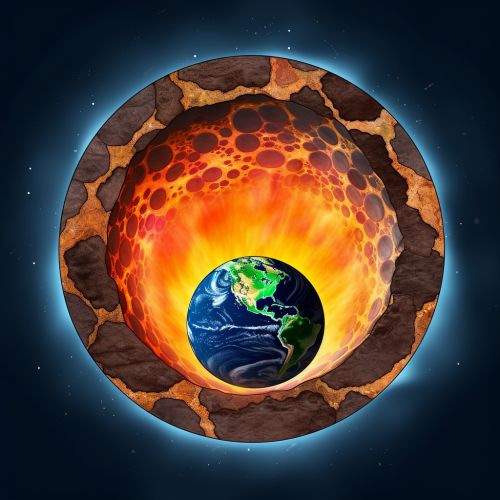The Science of Earths Mantle Convection and Plate Dynamics
Introduction
The mantle is a layer of the Earth that lies between the crust and the core. It is the largest layer of the Earth, accounting for about 84% of the planet's volume. The mantle is primarily composed of silicate rocks rich in magnesium and iron, and it is divided into two main sections: the upper and lower mantle. The mantle plays a crucial role in the movement of tectonic plates, a process known as plate tectonics. This movement is driven by mantle convection, a heat-driven process that circulates material within the mantle.


Mantle Convection
Mantle convection is the slow, churning motion of the Earth's mantle caused by the heat from the core and the cooling of the crust. This process is similar to the boiling of water in a pot. As the water heats up, it rises to the top, cools down, and then sinks back to the bottom to be reheated. Similarly, in the mantle, hot material rises towards the crust, cools down, and then sinks back towards the core to be reheated.
The process of mantle convection is driven by two main forces: gravitational force and thermal energy. Gravitational force causes the denser, cooler material to sink towards the core, while thermal energy causes the less dense, hotter material to rise towards the crust. This continuous cycle of rising and sinking material creates a convection current that drives the movement of the tectonic plates on the Earth's surface.
Plate Tectonics
Plate tectonics is the theory that explains the large-scale movement of the Earth's lithosphere, the rigid outermost shell of the planet that includes the crust and the uppermost part of the mantle. The lithosphere is divided into several large and small tectonic plates that float on the semi-fluid asthenosphere, a layer of the mantle beneath the lithosphere.
The movement of these tectonic plates is driven by mantle convection. As the hot material from the mantle rises towards the crust, it pushes the tectonic plates apart at the mid-ocean ridge. Conversely, as the cooler material sinks towards the core, it pulls the tectonic plates towards each other at the subduction zone. This continuous cycle of plate movement is responsible for the creation of mountains, earthquakes, and volcanic activity.
Mantle Convection and Plate Dynamics
The interaction between mantle convection and plate dynamics is a complex process that is still not fully understood. However, it is known that the movement of tectonic plates can influence the pattern of mantle convection, and vice versa. For example, the sinking of a tectonic plate at a subduction zone can create a downward flow in the mantle, which can in turn influence the movement of other nearby plates.
Moreover, the movement of tectonic plates can also affect the temperature and pressure conditions in the mantle, which can influence the rate and pattern of mantle convection. For instance, the upwelling of hot material at a mid-ocean ridge can increase the temperature in the upper mantle, which can accelerate the rate of mantle convection.
Conclusion
The science of Earth's mantle convection and plate dynamics is a fascinating field that provides insights into the inner workings of our planet. The continuous cycle of mantle convection and plate movement is responsible for shaping the Earth's surface and influencing its geological activity. Despite the progress made in understanding these processes, there is still much to learn about the complex interactions between mantle convection and plate dynamics.
